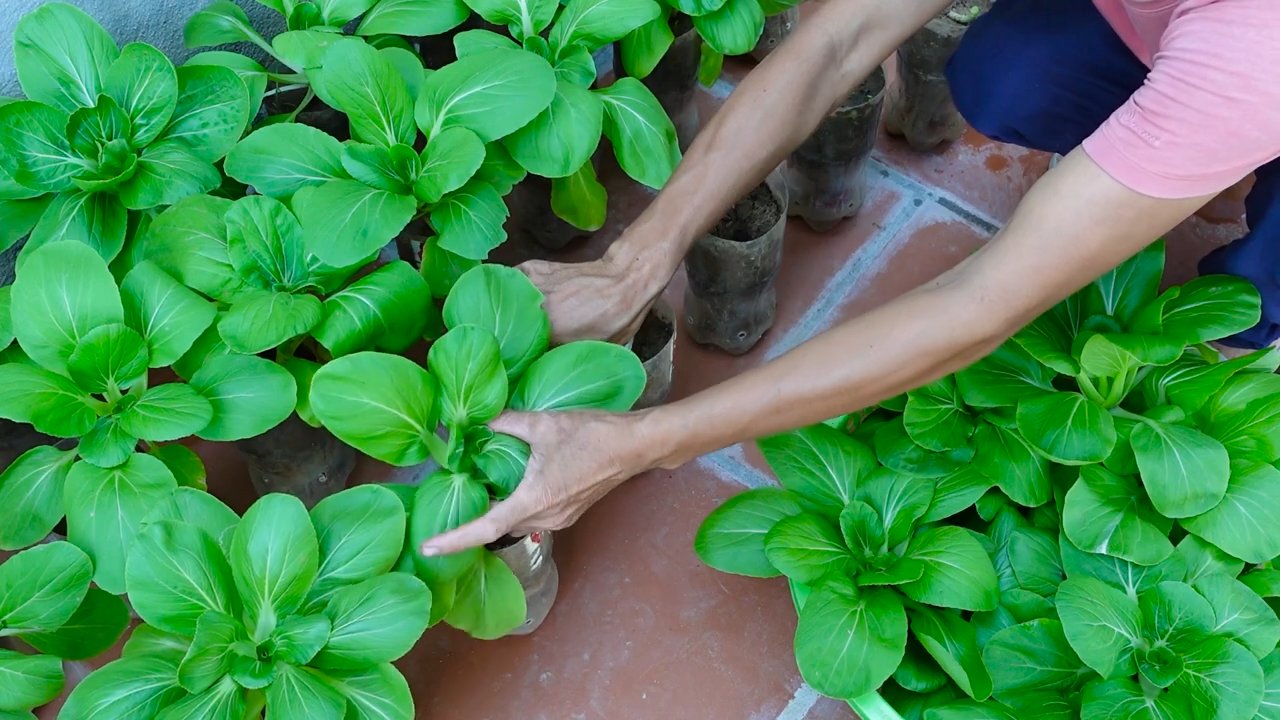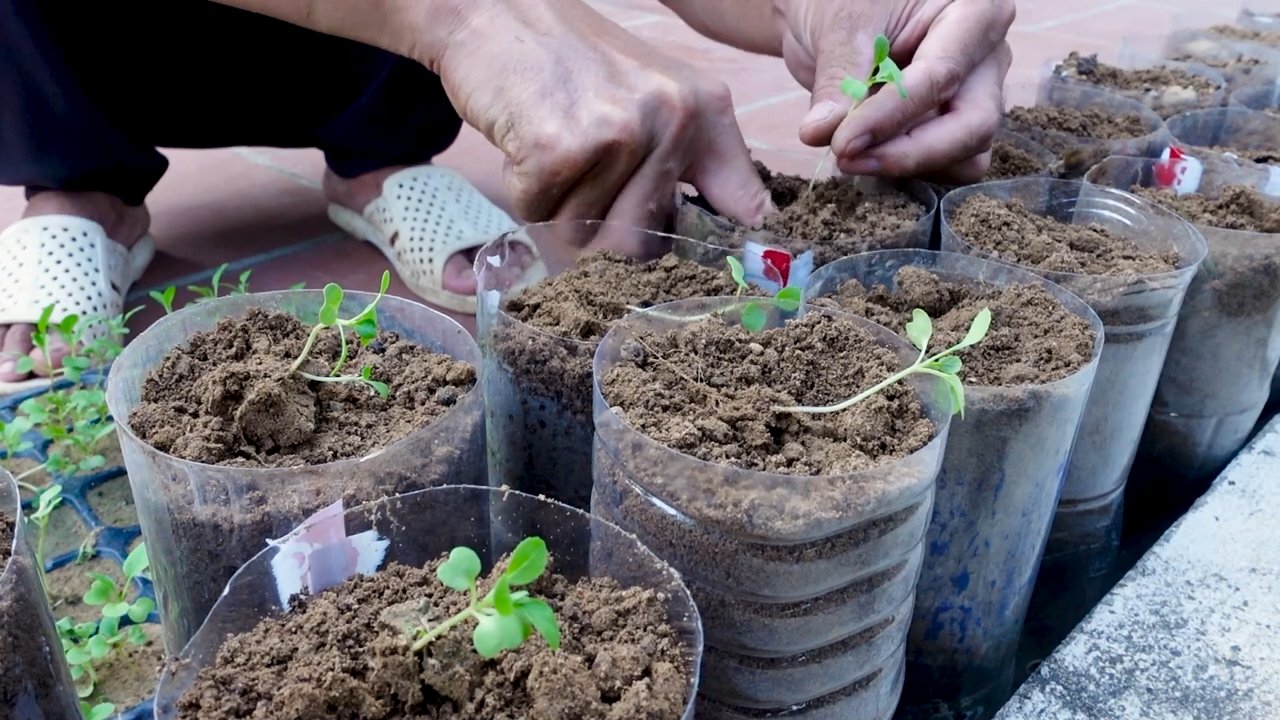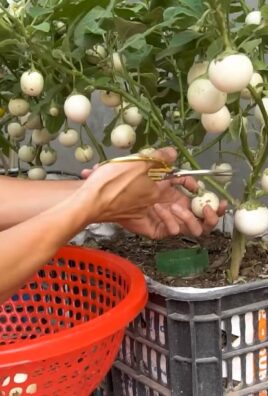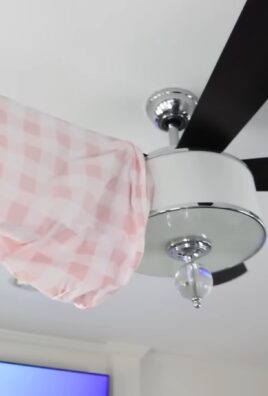Yardless gardening success might sound like an oxymoron, but trust me, it’s absolutely achievable! Are you dreaming of fresh herbs, vibrant flowers, or even juicy tomatoes, but lack the sprawling backyard to make it happen? Don’t let limited space stifle your green thumb. I’m here to tell you that you can cultivate a thriving garden, even without a traditional yard.
For centuries, people have found creative ways to grow food and beauty in confined spaces. From the hanging gardens of Babylon to the window boxes of Parisian apartments, the desire to connect with nature and cultivate our own food has always found a way. This resourcefulness is more relevant than ever today, as urban populations grow and access to green spaces becomes increasingly limited.
That’s why I’ve compiled this collection of DIY tricks and hacks specifically designed to unlock yardless gardening success. Whether you have a tiny balcony, a sunny windowsill, or just a spare corner indoors, these tips will empower you to create your own little oasis. Imagine the satisfaction of harvesting your own salad greens, the joy of watching a vibrant flower bloom, and the peace of mind knowing exactly where your food comes from. Let’s ditch the “yard required” mentality and get growing!

Yardless Gardening: Transforming Tiny Spaces into Thriving Gardens
Okay, so you’re dreaming of fresh tomatoes, fragrant herbs, and vibrant flowers, but your reality is… well, a concrete jungle. No sprawling backyard? No problem! Yardless gardening is your answer. I’m going to walk you through creating a beautiful and productive garden, even if all you have is a balcony, patio, or even just a sunny windowsill. Get ready to unleash your inner green thumb!
Choosing Your Yardless Gardening Method
Before we dive into the nitty-gritty, let’s explore the most popular yardless gardening techniques. This will help you decide which method best suits your space, budget, and gardening goals.
* Container Gardening: This is the most common and versatile method. You can use pots, planters, hanging baskets – anything that holds soil! It’s perfect for balconies, patios, and even indoor spaces.
* Vertical Gardening: Maximize your space by growing upwards! Think wall-mounted planters, stacked pots, or even repurposed pallets. This is ideal for small balconies or anyone wanting a visually stunning garden.
* Hydroponics: A soilless method where plants are grown in nutrient-rich water. It can be a bit more technical, but it’s incredibly efficient and can produce impressive yields.
* Aquaponics: A symbiotic system combining aquaculture (raising fish) and hydroponics. Fish waste provides nutrients for the plants, and the plants filter the water for the fish. It’s a more advanced option, but incredibly rewarding.
* Straw Bale Gardening: Using straw bales as raised garden beds. They decompose over time, providing nutrients to your plants. A great option if you have a sunny patio or deck.
For this guide, we’ll focus primarily on **container gardening** and touch on **vertical gardening**, as these are the most accessible and beginner-friendly options.
Gathering Your Supplies
Alright, let’s get our hands dirty! Here’s a list of the essentials you’ll need to get started:
* Containers: Choose pots, planters, or hanging baskets with drainage holes. Size matters! Consider the mature size of the plants you want to grow.
* Potting Mix: Don’t use garden soil! It’s too heavy and doesn’t drain well in containers. Opt for a high-quality potting mix specifically designed for container gardening.
* Seeds or Seedlings: Decide what you want to grow! Seeds are more economical, but seedlings give you a head start.
* Watering Can or Hose: Essential for keeping your plants hydrated.
* Fertilizer: A balanced, slow-release fertilizer will provide your plants with the nutrients they need.
* Trowel or Hand Shovel: For planting and transplanting.
* Gardening Gloves: Protect your hands!
* Optional: Plant labels, trellis (for climbing plants), garden shears, insecticidal soap (for pest control).
Choosing the Right Plants
Not all plants are created equal when it comes to container gardening. Here are some of my favorite choices that thrive in pots:
* Vegetables: Tomatoes (determinate varieties), peppers, lettuce, spinach, kale, radishes, carrots (short varieties), bush beans, herbs (basil, mint, rosemary, thyme).
* Fruits: Strawberries, blueberries (dwarf varieties), raspberries (dwarf varieties).
* Flowers: Petunias, geraniums, marigolds, pansies, impatiens, begonias, zinnias.
Important Considerations:
* Sunlight: How much sun does your space get? Choose plants that match your sunlight conditions.
* Size: Consider the mature size of the plant. Don’t overcrowd your containers.
* Climate: Choose plants that are suitable for your local climate.
* Companion Planting: Some plants grow well together and can even benefit each other. Research companion planting to maximize your yields and minimize pests. For example, basil repels pests that attack tomatoes.
Step-by-Step Guide to Container Gardening
Okay, let’s get planting! Follow these steps for a successful container garden:
1. Prepare Your Containers: Make sure your containers are clean and have adequate drainage holes. If using old containers, scrub them with soap and water to remove any dirt or debris.
2. Fill with Potting Mix: Fill your containers with high-quality potting mix, leaving about an inch or two of space at the top. Don’t pack the soil down too tightly.
3. Plant Your Seeds or Seedlings:
* Seeds: Follow the instructions on the seed packet for planting depth and spacing. Gently cover the seeds with potting mix and water lightly.
* Seedlings: Dig a hole in the potting mix large enough to accommodate the root ball of the seedling. Gently remove the seedling from its container and loosen the roots slightly. Place the seedling in the hole and backfill with potting mix. Water thoroughly.
4. Water Thoroughly: Water your newly planted seeds or seedlings thoroughly until water drains out of the drainage holes.
5. Fertilize: Apply a slow-release fertilizer according to the package instructions.
6. Place in a Sunny Location: Place your containers in a location that receives the appropriate amount of sunlight for the plants you’ve chosen.
7. Water Regularly: Check the soil moisture regularly and water when the top inch of soil feels dry to the touch. Avoid overwatering, as this can lead to root rot.
8. Monitor for Pests and Diseases: Keep an eye out for pests and diseases. Treat any problems promptly with insecticidal soap or other appropriate treatments.
9. Harvest and Enjoy! Harvest your vegetables, fruits, and herbs as they ripen. Enjoy the fruits (and vegetables!) of your labor!
Vertical Gardening: Growing Upwards
If you’re really short on space, vertical gardening is your best friend. Here are a few ideas to get you started:
* Wall-Mounted Planters: These are readily available at garden centers and come in a variety of styles. Simply attach them to a wall or fence and fill them with potting mix and plants.
* Stacked Pots: Create a tiered garden by stacking pots of different sizes on top of each other.
* Hanging Baskets: Hang baskets from your balcony railing, porch, or even from tree branches.
* Repurposed Pallets: Transform a wooden pallet into a vertical garden by attaching fabric or plastic liners to the back and sides of each section. Fill with potting mix and plants.
* DIY Trellis: Build a simple trellis from bamboo stakes or wooden dowels to support climbing plants like tomatoes, cucumbers, or beans.
Tips for Vertical Gardening:
* Choose Lightweight Potting Mix: Vertical gardens can be heavy, so use a lightweight potting mix to reduce the weight.
* Water Frequently: Vertical gardens tend to dry out more quickly than traditional container gardens, so water them more frequently.
* Fertilize Regularly: Vertical gardens require regular fertilization to provide the plants with the nutrients they need.
* Consider the Weight: Make sure your wall or structure can support the weight of the vertical garden.
Troubleshooting Common Yardless Gardening Problems
Even with the best planning, you might encounter a few challenges along the way. Here’s how to tackle some common problems:
* Yellowing Leaves: This could be a sign of overwatering, underwatering, nutrient deficiency, or pest infestation. Check the soil moisture, fertilize if necessary, and inspect for pests.
* Leggy Growth: This usually indicates insufficient sunlight. Move your plants to a sunnier location.
* Pests: Common pests include aphids, spider mites, and whiteflies. Treat with insecticidal soap or neem oil.
* Diseases: Common diseases include powdery mildew and blight. Ensure good air circulation and avoid overwatering. Treat with a fungicide if necessary.
* Lack of Fruit Production: This could be due to insufficient pollination, nutrient deficiency, or improper watering. Hand-pollinate your plants if necessary, fertilize regularly, and ensure proper watering.
Maintaining Your Yardless Garden
Maintaining your yardless garden is key to its long-term success. Here are a few tips:
* Water Regularly: Check the soil moisture regularly and water when the top inch of soil feels dry to the touch.
* Fertilize Regularly: Fertilize your plants every few weeks with a balanced fertilizer.
* Prune Regularly: Prune your plants to encourage bushier growth and remove any dead or diseased leaves.
* Deadhead Flowers: Remove spent flowers to encourage more blooms.
* Repot as Needed: As your plants grow, they may need to be repotted into larger containers.
* Protect from Frost: If you live in an area with frost, protect your plants by covering them with blankets or moving them indoors.

Conclusion
So, there you have it! Yardless gardening success is not only achievable but also incredibly rewarding. We’ve explored a simple yet powerful DIY trick that unlocks the potential of growing fresh produce, vibrant flowers, and lush herbs, even without a traditional garden. This isn’t just about saving money; it’s about connecting with nature, reducing your carbon footprint, and enjoying the unparalleled taste of homegrown goodness.
This method is a game-changer for apartment dwellers, city residents with limited space, or anyone who simply wants a low-maintenance gardening solution. Forget about tilling, weeding, and back-breaking labor. This approach focuses on maximizing yield with minimal effort, allowing you to enjoy the fruits (and vegetables!) of your labor without the usual gardening hassles.
But the beauty of this DIY trick lies in its adaptability. Feel free to experiment with different containers, soil mixtures, and plant combinations. Try vertical gardening techniques to maximize space even further. Consider adding companion plants to naturally deter pests and enhance growth. For example, basil planted near tomatoes can improve their flavor and repel insects. Marigolds are excellent for keeping nematodes away from root vegetables.
Don’t be afraid to get creative with your container choices. Upcycle old buckets, crates, or even tires into unique and functional planters. Just ensure they have adequate drainage to prevent waterlogging. You can also explore different growing mediums, such as coco coir or perlite, to improve drainage and aeration.
Remember, the key to yardless gardening success is observation and adaptation. Pay attention to your plants’ needs and adjust your watering, fertilizing, and sunlight exposure accordingly. Don’t be discouraged if you encounter challenges along the way. Gardening is a learning process, and every mistake is an opportunity to improve.
We wholeheartedly encourage you to try this DIY trick and experience the joy of yardless gardening firsthand. It’s a simple, affordable, and sustainable way to bring the beauty and bounty of nature into your life, regardless of your living situation.
Once you’ve given it a try, we’d love to hear about your experience! Share your photos, tips, and challenges in the comments below. Let’s build a community of yardless gardeners and inspire others to embrace this rewarding and sustainable practice. Your insights could be invaluable to someone just starting out. Let us know what worked for you, what didn’t, and any creative variations you came up with. Together, we can unlock the full potential of yardless gardening and create a greener, healthier world, one container at a time.
Frequently Asked Questions (FAQ)
What exactly is yardless gardening?
Yardless gardening, also known as container gardening or urban gardening, is the practice of growing plants in containers rather than directly in the ground. This method is ideal for people who lack a traditional garden space, such as apartment dwellers, city residents, or those with limited mobility. It allows you to grow a wide variety of plants, including vegetables, fruits, herbs, and flowers, in a controlled environment.
What are the benefits of yardless gardening?
Yardless gardening offers numerous benefits, including:
* **Accessibility:** It allows anyone to grow plants, regardless of their living situation or physical limitations.
* **Space-saving:** It’s perfect for small spaces like balconies, patios, and rooftops.
* **Control:** You have complete control over the soil, water, and nutrients your plants receive.
* **Mobility:** Containers can be easily moved to optimize sunlight exposure or protect plants from harsh weather.
* **Pest control:** Container gardening can help reduce pest problems by isolating plants from soil-borne pests.
* **Sustainability:** It promotes sustainable living by reducing your reliance on store-bought produce and minimizing your carbon footprint.
* **Therapeutic:** Gardening has been shown to reduce stress and improve mental well-being.
What types of containers can I use for yardless gardening?
Almost any container can be used for yardless gardening, as long as it has adequate drainage. Some popular options include:
* **Plastic pots:** Lightweight, durable, and affordable.
* **Terracotta pots:** Porous and allow for good aeration, but can dry out quickly.
* **Wooden boxes:** Add a rustic touch and can be custom-built to fit your space.
* **Fabric pots:** Breathable and promote healthy root growth.
* **Upcycled containers:** Buckets, crates, tires, and other repurposed items can be used to create unique and sustainable planters.
Ensure that the container is clean and free of any harmful chemicals before planting.
What type of soil should I use for yardless gardening?
It’s crucial to use a high-quality potting mix specifically designed for container gardening. Garden soil is too heavy and compacts easily, which can hinder root growth and drainage. A good potting mix should be lightweight, well-draining, and rich in organic matter. You can also amend your potting mix with compost, perlite, or vermiculite to improve drainage and aeration.
How often should I water my container plants?
The watering frequency depends on several factors, including the type of plant, the size of the container, the weather conditions, and the type of soil. Generally, container plants need to be watered more frequently than plants grown in the ground, as they tend to dry out faster. Check the soil moisture regularly by sticking your finger about an inch into the soil. If it feels dry, it’s time to water. Water thoroughly until water drains out of the bottom of the container. Avoid overwatering, as this can lead to root rot.
How much sunlight do my container plants need?
The amount of sunlight required depends on the type of plant. Most vegetables and flowering plants need at least six hours of direct sunlight per day. Leafy greens and herbs can tolerate partial shade. Observe your plants closely and adjust their location as needed to ensure they receive adequate sunlight.
Do I need to fertilize my container plants?
Yes, container plants need regular fertilization, as the nutrients in the potting mix are gradually depleted over time. Use a balanced, slow-release fertilizer or a liquid fertilizer diluted according to the package instructions. Fertilize every two to four weeks during the growing season.
How do I deal with pests and diseases in my yardless garden?
Prevention is key to managing pests and diseases in your yardless garden. Choose disease-resistant plant varieties, provide adequate spacing between plants, and water at the base of the plants to avoid wetting the foliage. Regularly inspect your plants for signs of pests or diseases. If you spot any problems, take action immediately. You can use organic pest control methods, such as insecticidal soap, neem oil, or diatomaceous earth.
Can I grow vegetables in containers?
Absolutely! Many vegetables thrive in containers, including tomatoes, peppers, cucumbers, lettuce, spinach, carrots, and radishes. Choose compact or dwarf varieties that are well-suited for container gardening. Provide adequate support for vining vegetables like tomatoes and cucumbers.
What are some tips for successful yardless gardening?
Here are some additional tips for successful yardless gardening:
* Choose the right plants for your climate and growing conditions.
* Use high-quality potting mix.
* Provide adequate drainage.
* Water regularly and thoroughly.
* Fertilize regularly.
* Protect your plants from extreme weather conditions.
* Monitor your plants for pests and diseases.
* Don’t be afraid to experiment and learn from your mistakes.
* Enjoy the process!
By following these tips, you can enjoy a bountiful harvest from your yardless garden, no matter where you live. Remember that **yardless gardening success** is within your reach!




Leave a Comment